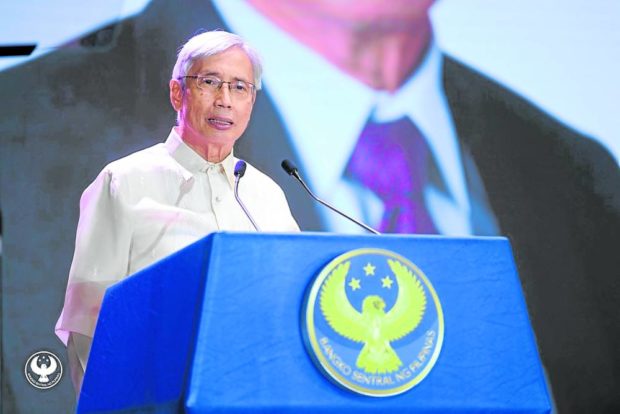Bangko Sentral ng Pilipinas (BSP) Governor Felipe Medalla is not worried about the country’s diminishing foreign exchange reserves, saying these remained adequate and the government has other means to shore up the Philippine peso against the US dollar, which is becoming increasingly stronger.
The local currency closed spot trading at 55.93:$1 on Aug. 19, depreciating for the sixth straight session since hitting 55.30:$1 on Aug. 11.
In mid-June, market analysts raised the alarm as the peso sank below 53:$1 and became one of the worst performing currencies in Asia. Over the following weeks, the peso approached its all-time weakest position of 56.45:$1, which was last seen in 2004.
The steep downward path was arrested when the BSP announced a surprise, large policy rate hike of 75 basis points on July 14.
Amid the peso’s downward path, the BSP’s gross international reserves (GIR) has decreased for the fifth straight month in July, sinking below the $100-billion mark for the first time since reaching $100.4 billion in September 2020.
The BSP reiterated that the latest GIR level represented a more than adequate external liquidity buffer equivalent to 8.3 months’ worth of imports of goods and payments of services and primary income.
The GIR is also about 7.2 times the country’s short-term external debt based on original maturity and 4.6 times based on residual maturity.
“Not all the decline in the GIR is due to our efforts to prevent the peso from depreciating,” Medalla said of the BSP’s intervention.
The BSP chief said the declining GIR showed that the government was now using what it borrowed previously.
“Remember [that] the increase in GIR [previously] is partly because the government wisely borrowed in advance before the cost of borrowing could rise,” he added. “They made the right decision. If they had postponed borrowing and are borrowing [just] now, they’ll be paying a lot more.”
Medalla noted other countries were also seeing their foreign reserves go down.
“Of course, it’s fair to say that quite a bit of the decline [of the GIR] is due to intervention [for the peso],” he said, adding: “I suppose [that] without intervention, the peso would have depreciated even more. There was a tremendous increase in the need for dollars to pay for imports.” INQ


